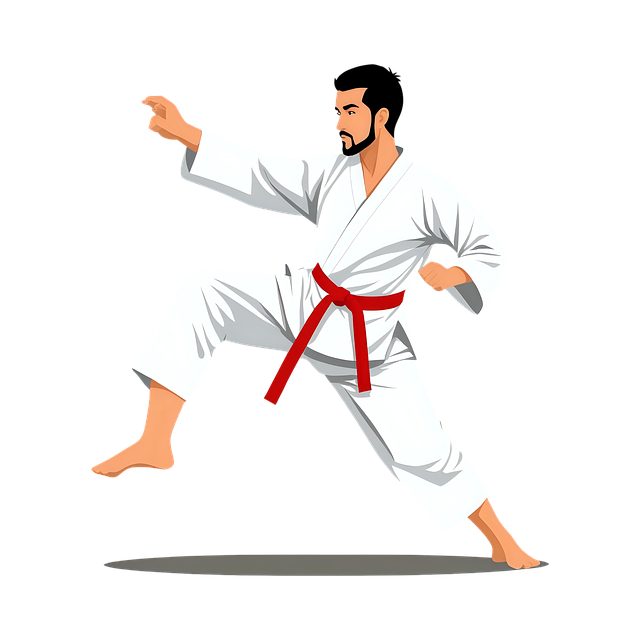The Karate Gi, or keikogi, is central to traditional martial arts practice, symbolizing discipline, tradition, and respect. It's a functional piece of apparel crafted from cotton or hemp, consisting of a jacket (Uwagi) and trousers (Shukke-gi), with a belt indicating the wearer's rank. The Gi ensures freedom of movement for technical execution while maintaining a uniform appearance across different schools of Karate. It's designed for optimal performance during rigorous training, featuring breathable and durable fabric that allows for clarity and precision in every motion. When selecting a Gi, fit is crucial to enable full range of motion without restriction. Quality variations exist, from general use to competition models with enhanced fit and materials. Beyond its functional aspects, the Karate Gi is also a tangible emblem of practitioners' commitment to karate's traditional roots and their respect for its discipline.
In terms of safety gear, karate practitioners wear specialized equipment that includes protective gloves, shin guards, and headgear, particularly in full-contact sparring. These items offer defense while ensuring the freedom of movement essential for effective technique execution. Footwear selection is critical for performance enhancement and safety, with options ranging from barefoot training to specialized karate footwear that provide grip, breathability, and stability.
For advanced practitioners, a holistic approach to training includes integrating traditional practices with modern equipment such as mitts, focus pads, target pads, kick shields, stability balls, and balance trainers to enhance core strength and balance. These tools help karateka refine their skills for a more effective martial arts experience, complementing the traditional use of the karate gi in upholding the sport's values and techniques.
Karate, a discipline steeped in tradition and dynamic in practice, encompasses a wide array of techniques ranging from strikes and kicks to grappling and throws. A practitioner’s journey in this martial art not only hones their physical abilities but also deepens their understanding of mental fortitude. Central to this journey is the selection of appropriate equipment, which includes more than just a karate suit, known as the ‘Karate Gi’. This article delves into the essential gear required for effective Karate practice, highlighting the significance of the Gi, protective equipment, and footwear that provide both functionality and safety. We will also explore advanced training tools designed to enhance performance for those looking to push their limits.
- Understanding the Essentials: The Karate Gi and Its Significance
- Grappling with Gear: Protective Equipment for Karate Practitioners
- Striking the Right Balance: Choosing the Best Karate Footwear
- The Role of Mouthguards and Hand Protection in Karate Training
- Enhancing Performance with Advanced Karate Training Equipment
Understanding the Essentials: The Karate Gi and Its Significance

In the realm of traditional martial arts, the Karate Gi holds a place of significance beyond its role as a mere karate suit name. This garment is more than just a uniform; it symbolizes discipline, tradition, and respect for the art of Karate. Typically composed of cotton or hemp, the Gi consists of a jacket and trousers, with a belt indicating the wearer’s rank. The design and material of the Gi facilitate movement and allow practitioners to execute techniques with ease while providing a consistent standard across different schools of Karate. The top, known as the ‘Uwagi,’ is usually buttoned up and worn over a white t-shirt or undershirt for modesty, while the trousers, called ‘Shukke-gi,’ are straight-legged and secured with a drawstring. The Gi’s breathability and durability make it ideal for the physical demands of Karate training and competition, ensuring that every movement is clear and precise. It is not merely the attire of Karate practitioners but a tangible representation of their commitment to the discipline and an homage to the traditional roots of the martial art. When selecting a Gi, it is important to choose one that fits properly, allowing full range of motion without being overly baggy or tight. The quality of the Gi can vary, with some designed specifically for competition, offering superior fit and performance fabric to enhance the wearer’s agility and comfort during intense training sessions or official matches. Understanding the essential nature of the Karate Gi and its role in the practice underscores its importance not just as a garment but as a symbol of respect and adherence to the timeless tradition of Karate.
Grappling with Gear: Protective Equipment for Karate Practitioners

When engaging in the dynamic discipline of Karate, practitioners are required to wear specific protective gear to ensure safety and adherence to the sport’s traditions. A fundamental piece of equipment is the karate suit, also known as a gi. This garment serves a dual purpose: it provides a standardized uniform for participants, promoting equality on the mat, and offers a measure of protection during practice and competition. The traditional karate gi typically consists of a jacket and trousers made of cotton or hemp, fastened with a belt, or obi, to signify the wearer’s rank. While the design has remained relatively consistent over the years, modern iterations may include reinforced areas for added durability where strikes are most likely to land.
In addition to the gi, protective equipment such as gloves and shin guards are essential for practitioners who participate in full-contact sparring. These items are designed to safeguard both the striker and the recipient of techniques. Karate gloves, for instance, offer padding on the knuckles without compromising the dexterity needed for precise strikes. Shin guards, on the other hand, provide substantial protection for the lower legs and shins, areas commonly targeted in karate kumite (sparring) matches. Headgears are also used to prevent injuries to the head, which is crucial given that headbutts can be a part of some karate styles. Each piece of protective gear is crafted to align with the specific needs of Karate practitioners, ensuring that safety measures do not hinder the authenticity or effectiveness of the techniques performed.
Striking the Right Balance: Choosing the Best Karate Footwear

When practicing karate, selecting the appropriate footwear is crucial for optimizing performance and ensuring safety during training sessions. Traditional karate is often performed barefoot or with only a soft soled shoe to maintain a direct connection between the practitioner’s feet and the training surface, allowing for better grip and balance. However, in environments where hard surfaces or rough terrain are present, specialized karate footwear can provide additional protection and support.
The best karate footwear should offer a balance of flexibility, grip, and breathability without compromising on stability or control. Features such as non-marking soles are essential to prevent damage to training surfaces, while a snug fit that allows for natural movement is key. Some practitioners opt for lightweight and flexible designs that mimic the feel of being barefoot, ensuring that the karate suit name (e.g., Gi) remains unobstructed for proper technique execution. Other karateka might prefer a more robust shoe with reinforced toe and heel areas for extra durability during high-impact strikes and kicks. Regardless of preference, the chosen footwear should facilitate the practitioner’s ability to move fluidly, strike with precision, and maintain balance throughout their karate practice. It’s important to try different types of karate footwear to determine which pair aligns best with your specific needs, as comfort and performance can vary based on individual foot shape, mat surface, and personal training style.
The Role of Mouthguards and Hand Protection in Karate Training

Participants in karate engage with a variety of protective gear to enhance safety and performance during training and competition. One critical piece of equipment is the karate suit, also known as a Gi or Keikogi, which all practitioners must wear. This traditional uniform not only signifies respect for the discipline but also ensures that the movements are executed correctly without hindrance from loose-fitting clothing. In addition to the Gi, mouthguards and hand protection are indispensable for karatekas. Mouthguards are essential for protecting the teeth, gums, and jaw from impact during sparring sessions. They also help in maintaining a proper bite, which is crucial for the focus and stability required in executing techniques. Hand protection, such as fingerless gloves or hand pads, safeguard the hands from blunt forces and abrasions that can occur when striking punching bags or partnering during kumite (sparring) drills. These protective measures allow practitioners to train with greater confidence and intensity, knowing their safety is paramount. The choice between fingerless gloves or hand pads often depends on the type of training and personal preference, as they each offer specific benefits in terms of protection and grip. Whether it’s for daily practice or high-stakes competition, incorporating these protective elements into karate regimens is a fundamental aspect of responsible training.
Enhancing Performance with Advanced Karate Training Equipment

Engaging in advanced karate training necessitates a comprehensive approach that includes both technique and equipment designed to enhance performance. A fundamental piece of equipment for any karateka is the karate gi, which not only serves as the traditional uniform but also provides comfort and mobility essential for executing precise movements. The gi’s cotton material absorbs sweat, reducing distractions from clinging fabric and allowing the athlete to focus on form and power. Additionally, the proper fit of a karate suit, often referred to by its Japanese name ‘keikogi,’ is crucial for optimizing movement range without hindering strikes or kicks.
Beyond the traditional gi, modern training regimens incorporate a variety of specialized equipment. Mitts and focus pads are used to refine punching techniques with precision and control, ensuring that each strike is delivered with the correct mechanics. Target pads and kick shields are also indispensable for developing accurate kicks and strikes towards various target zones. Stability balls and balance trainers are increasingly popular among karate practitioners as they provide dynamic platforms for performing exercises that improve core strength and balance, which are critical components of karate performance. These tools, combined with the traditional gi, create a robust training setup that caters to both the physical and technical aspects of the martial art, enabling practitioners to elevate their skills to new heights.
In conclusion, karate is a disciplined martial art that requires not only physical prowess but also the appropriate equipment to ensure safety and authenticity during practice and competition. The traditional karate suit, known as the gi, serves as a symbol of respect and unity among practitioners. Beyond the gi, protective gear such as mouthguards and hand protection are crucial for safeguarding against injuries, particularly in contact-based training. Selecting the best karate footwear is also key to maintaining balance and agility on the mat. Lastly, advanced equipment designed to enhance performance can offer Karateka valuable tools to refine their techniques and skills. Whether a beginner or an experienced practitioner, understanding the role of each piece of gear contributes to a well-rounded approach to mastering this dynamic martial art.
